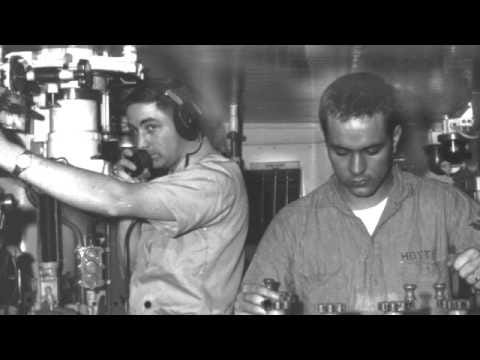Today we’re going to pick up where we started last Friday with Part II of what will be a four part series on what continues to be both internally and externally what seems to be an intentionally forgotten part of the US Navy’s history - the surface force combat experience in the Vietnam War.
That isn’t an exaggeration. Not to pick on the good VADM Cooper, this oversight is gobsmackingly common. He is just the most senior and recent example.
So, let’s dive in a year your humble blogg’r was still a toddler that we first looked at in 2013.
Captain Lindsey S. McCarty, USN giving a hot wash-up to his crew after USS Newport News (CA-148) and USS Lynde McCormick (DDG-8) engaged shore batteries in North Vietnam 19 December 1967.
If you go to the YouTube page, you can find some comments from former crew members and their families.




In 1967 until December 1968, I served with USS Waddell DDG-24. During that time we deployed to Tonkin Gulf three times for patrols lasting between 42 and 45 days. [Between patrols, maintenance, rearmament and crew recovery were required]. While on patrol, we were generally flagship, naval air and gunfire support, Tonkin Gulf. From August of 1968, USS New Jersey BB-62 became available. [I thought it ironic that in the past battleships commanded destroyers, while we were commanding a battleship]. Apart from engaging enemy ground targets along the DMZ, we often engaged in offensive strikes against detected enemy missile boats and enemy coastal defense batteries. Rarely, the enemy would try to attack ships with SS-N-2 Styx anti-ship missiles, MiG-17/19/21 jets, or sometimes combinations of missiles and aircraft. Generally, we tried to attack missile boats before they could launch, rendering defense unnecessary. Only one attack delivered ordnance against Allied forces between 1968 and the end of the war in 1972 - a single 250 kg bomb from a MiG-17 - which was unopposed because it was undetected. The worst defeat was caused by USAF, which got confused trying to intercept enemy helicopters and ended up attacking (and hitting) DDG HMAS Hobart - after which the enemy helicopters engaged USS Boston, Hobart and two ancient US gun type destroyers of WW2 vintage. Never mind Boston and Hobart were SAM ships with heavy AAA guns, so far as we know the enemy helos were not hit. However, I am aware of no other instance of enemy offensive use of helicopters. These began the confusing night battle shelling the DMZ and ended it shelling four Allied warships with 37 mm and 20 mm guns. The briefing I attended post battle claimed that the helicopters were Mi-6's - the world's largest - a type not known to be in service with North Vietnam. For which reason it was thought they must be PLAAF, which owned three we knew about. There were also a small number of successful enemy mine attacks hitting mainly auxiliary ships or transports. The most dramatic fight was a night raid trying to sever the sea line of communications between Malaysia and Cambodia. This moved eight times the tonnage into Southern Vietnam (III Corps area) than came down the Ho Chi Minh Trail every day. We engaged a very large number of armed junks (fitted with 122 and 152 land type gun howitzers). They did not follow the Western playbook and scatter, electing instead to run right through our line (possibly the last line of battle by gunships in naval history) instead. This was judged too dangerous and never tried again. The enemy Sea LOC remained operational until the U.S. Army's "incursion into Cambodia" finally cut it in 1972. Few are aware there was actual naval combat in the Vietnam War. We don't brag about a campaign we didn't win.
many thanks ... an old shipmate sent me this ... i had the same thought when i heard VADM C.'s spot on 60 Minutes ... I said to myself, "what about the gunline in Vietnam -- that got pretty hot at times" ... SWO's from that era didn't get V's on their NCMs and NAMs for having shiny shoes ... however, I would give VADM C the benefit of the doubt on his comment regarding ops in 5th fleet and WWII ... we simply don't value history much in our service ... there's no H (for history) in STEM .... and thanks again for that great video ... i got a little chill listening to the skipper.